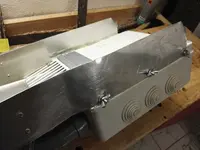Back from stream
I prospected a gravel bar a few miles downwards my usual place. (shorter distance, easy to reach)
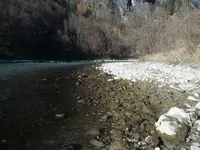
I found some test holes from ancestors and decided to dig across the gravel bar (<1 foot deep)
The gold line is next to the control structures.
I did not find much gold, only veeeery tiny specs, uncommonly small for that area.
Perhaps I have to dig much deeper. On the picture you may recognize an old barrel buried in the gravel bar (right side of my bucket). Could be that the gold is down there.
But it was a sunny day and warm. I digged with my T-shirt in mid November

Now my results:
I collected the material from all test holes in a big bucket and ran it through my box. Additionally digged a bigger hole without classifying the material.
First a note: the attached funnel suck during transport. I was hardly able to get it loaded in my car. But it did its job quite well.
So for the future: either leave it at home, or make it easily detachable.
The new design seems to work "better" in case of handling the material but I faced two major issues.
I removed the rubber after the first minute, not enough flow to clean it under the punch plate (minor because of the easy fix).
The thing I learned (again):
Puch plate sucks 
Why? As I changed the design the angle between punch plate and slick plate is so small that at the beginning the current is so slow that black sand blocks the first inches.
At the end the punch plate was clogged by gravel not passing the box. (which was much better than the old version, I was able to wash that stuff away with help of a bucket)
So there was not much space for the heavies to get into the trap.
I haven't made any pictures because I was pissed of

So a real grizzly is a compelling feature.
The second problem I had was my own fault.
I did not recognize that the tubes did not fit properly, so I lost water before the trap resulting in less fluid bed action and clogging the end of the trap. One hole was completely outside the trap and cleaned the gravel bar

Behind the trap I put my pan and tested the tailings where I found a lot of the very fine stuff. Can't say whether it was due to the incomplete stratification or scouring inside the trap or a combination of both which I expect.
What I found:
Tons of magnetite, a lot more than usual:
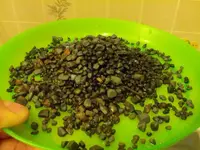
>1/8
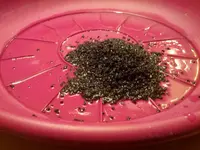
<1/8
The huge amount of bigger magnetite hindered me testing the fluid bed with my fingers. I was not able to stick through the stones.
At least the cleanout was a no-brainer. Put it into a bucket, turn on the pump...woooosh, done.
Much appreciated for any comments,
Michael











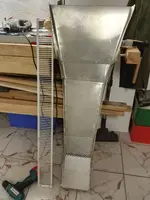

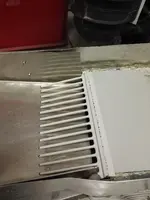
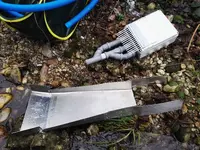
 . The fluid was quite cold but thanks to the wading trousers I soaked only my arms, hehe.
. The fluid was quite cold but thanks to the wading trousers I soaked only my arms, hehe. .
.
